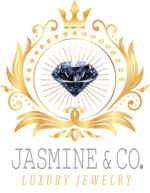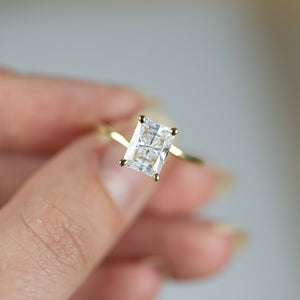When shopping for the perfect diamond, most people only know what is appealing to the naked eye, and what is less so. What many jewelry consumers don’t realize is that a great deal of time and analysis went into the selection of diamonds from which they have to choose. Diamond specialists use a system called the IGI (International Gemological Institute) certification to accurately label and classify market-worthy diamonds.
What is an IGI diamond certification?
An official IGI certification for diamonds is a detailed testament to a specific diamonds authenticity. It isn’t something that a diamond professional can just look at a diamond and properly issue. It takes lots of time, patience, various pieces of equipment and comparisons to other diamonds thought to be in the same certification category to accurately and justifiably assign diamonds an IGI certification. Before a diamond truly qualifies for such certification, it must meet certain high-priority standards, even among the higher-quality diamonds, and must be analyzed for the flawlessness of its characteristics, including (but not limited to) the 4 C’s: carat, color, clarity and cut.
What scale does the IGI use for diamond grading?
IGI certified diamonds are graded on a concise color scale. These grades range on a scale from D (100% colorless/white/clear) to Z (which include diamonds with the most yellow tint/primarily yellow-hued diamonds).
The carat scale for IGI certification varies according to a size vs. weight ratio. If a larger gem doesn’t weigh enough to properly match its size, it isn’t considered “perfect,” and therefore isn’t eligible for IGI certification.
The cut scale grade is determined by how each individual gem is impacted by its unique cut. Whether the natural facets remain intact, if the diamond cut reflects any inclusions or blemishes, and the angles of refracting light on the surface of the stone are all factors in grading a diamond cut.
What do IGI diamond grading reports include?
Any distinguishing characteristic of a diamond is usually included in a thorough, detailed IGI certification report. The precision of the diamond’s symmetrical features and proportions, the natural color of the gemstone (as defined by “naturally colored diamond” standards), the stone’s carat weight (not size; any size diamond can be considered flawless and IGI certifiable), and the clarity of the diamond are the most common, and most crucial, characteristic analyzed for accurate certification. In many instances, to help jewelry retailers and consumers understand some of the grading process, IGI professionals will include a diagram with each of the clarity characteristics mapped out in detail.
Why would you want an IGI certification when buying a diamond?
While most people don’t even consider buying diamonds with any kind of certification (in fact, many consumers aren’t even aware of the grading charts or various certifications available, beyond a certificate of generic authenticity), a more conscientious buyer might want an IGI certification to have proof of a diamonds flawless characteristics. Some people buy diamonds now and let them increase in value over the years to sell to a collector or rare jewel professional in a couple of decades. Others get a certification with the intention of leaving a piece(s) of jewelry in their wills for loved ones to inherit, and the certification might be necessary to assess the exact value of the gem. Still others want certification for no reason other than to frame it and pat themselves on the back for a diamond well bought.
Which is better: IGI or GIA diamond certification?
While GIA and IGI certificates are both reputable and backed by leading laboratories, there is a more widespread use of GIA certificates within the natural diamond industry and among jewelers. However, both IGI and GIA grade on the same basic principles and diamond characteristics. Therefore, both can be trusted to provide honest assessments of diamonds.
Neither IGI nor GIA can release a diamond grading certification unless they are absolutely certain, within all means at their disposal, that the gem deserves to be certified. As to which certification is better, we offer this advice: do your research, and shop around before making your final decision. If certification is important to you, be sure to ask questions to gemologists and jewelers that you work with and feel confident about your purchase.
FAQs
Which is better IGI and GIA for a diamond certificate?
While GIA and IGI certificates are both reputable and backed by leading laboratories, there is more widespread use of GIA certificates within the natural diamond industry and among jewelers. On the other hand, IGI certification is common for lab grown diamonds. However, IGI and GIA grade on the same parameters and diamond characteristics and can be trusted to provide an honest assessment.
What are the benefits of an IGI certification when it comes to a diamond?
There are many benefits of an IGI certification, starting with a verified assessment of the diamond’s cut, color, clarity, and carat, which points to its value. It also is helpful for resale purposes, inheritance valuations, and assessments.
What do IGI diamond grading reports include?
An IGI diamond grading report includes distinguishing characteristics, proportions, color, carat weight, and clarity of the diamond, among others. In many instances, to help jewelry retailers and consumers understand some of the grading processes, IGI professionals will include a diagram with each of the clarity characteristics mapped out in detail.
What is an IGI diamond certification?
The diamond certification by International Gemological Institute (IGI) is a detailed testament to the diamond’s authenticity and its characteristics, including its 4 Cs – cut, color, clarity, and carat.


1 Comment
I’m often to blogging and i really appreciate your content. The article has actually peaks my interest. I’m going to bookmark your web site and maintain checking for brand spanking new information.